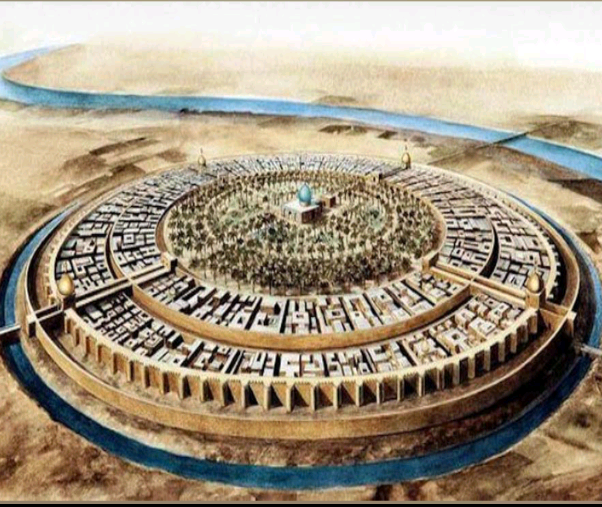A stunning evidence of advanced civilization and knowledge that have existed in the history of Africa is the Great Walls of Benin. It was an architectural feat constructed with earth and rebuilt again and again across several centuries. However, the Great Walls of Benin are merely a shadow of its original glory in the present day, despite being nominated as a potential heritage site.
The Great Walls of Benin (otherwise called the Benin Moat) is described in native Bini language as ‘Iyanuwo’. It was an intricate network of huge earthen walls and ramparts built around ancient Benin city (Edo state of Nigeria) through manual labour. The Great Walls of Benin were created even before the Benin monarchies were established. In this article, we will delve into the history, dimensions and cultural importance of the Great Walls of Benin.
Historical Origins of The Great Walls of Benin
The Great Walls of Benin consist of ramparts and walls that tower several feet high. Certain traditional sources put its entire length at around 16,000 kilometers (or 9,900 miles). Additionally, it encloses a land area of roughly 6,500 square kilometers (or 2,500 square miles). Historical records point out that its construction began sometime around the year 800 AD, and continued until 1460 AD. The Great Walls of Benin are classified in the league of he Great Wall of China (at 8,852 kilometers long).
The complex and extensive network of walls consist firstly of inner walls built to protect Benin city. The inner walls were roughly 10 kilometers (or 6.2 miles) in length. They enclosed key areas such as the Royal Palace and Chiefs’ residences. And beyond the inner wall, a broad ditch existed – equal to the wall’s dimensions.
An outer layer of walls were then raised to surround several villages and communities. Some of the earth dug up to build the inner walls were used to fortify the external walls, setting them up as ramparts. In essence, the walls were of various sizes that ranged from the shallow, to those as tall as 20 meters (or 66 feet) above ground.
The Great Walls of Benin: Its Strategic Functions
No single ruler (or period) in the history of Benin city can be given credit for the creation of the Great Walls of Benin. Its existence reportedly predates both the Ogiso kings and the Oba dynasty. Archaeological discoveries have shown that the walls were initially built to surround individual villages and wards. The walls served the dual purpose of socio-political boundaries and defense in general. But each village and ward constructed its walls for different reasons. These villages were later aggregated into Benin city of later times.
However, certain rulers of Benin – such as Oba Oguola and Oba Ewuare – contributed to the deepening and expanding of the walls. With these walls in place, the Ogiso kings and Obas not only continued rebuilding the walls. But they effectively used them to enforce control and organization within Benin city.
The Great Walls were set up as effective defensive structures – especially the ramparts. At such great heights, it was nearly impossible for any invader to climb into Benin city; and much more without being detected. He would be exposed to hordes of well-trained Benin soldiers, equipped with poisoned arrows and spears. The walls also possessed steep earth banks that made it risky for any invader to attempt to climb. Such intruders could be buried in sand avalanches.
Yet again, the Great Walls of Benin possessed 9 gates into the city, and were carefully guarded. There was strict access control at each gate; and each visitor was required to pay a toll to gain entry.
Recognizing The Great Walls of Benin as a Cultural Heritage Site
The Great Walls of Benin could be described as one of the longest earthen projects to have ever existed on the Earth. The Guinness Book of Records in 1974 gave recognition to Benin Walls as the most extensive earthworks ever created. Additionally, it was deemed the second-largest man-made structure in length (after the Great Wall of China). Then in 1955, the Great Walls of Benin were included as one of the World Heritage Sites (along with the Palaces of Abomey, and Sungbo’’s Eredo). The Benin Moat, however, is still awaiting official recognition by UNESCO.
The Challenge of Preserving The Great Walls of Benin
An unfortunate turn in history had the British forces invading Benin city in 1897 (the ‘Benin Expedition’). During the sad event, several parts of the Great Walls of Benin were destroyed. Additionally, several Benin artifacts were carted away to Europe. The shocking event led to a huge material loss that accounts for a distorted (and missing) history of ancient Africa. Yet again, much of the remnants of these walls are being pulled down to accommodate modern real estate projects.
It would be a better investment for these magnificent walls to be recognized as a tourism and heritage site. It has the potential to bring revenue to Edo state, and provide employment for its indigenous people. By restoring the walls, Nigeria will succeed in repositioning the great structure in agreement with the United Nations Sustainable Development Goals for Sustainable Cities and Communities.








